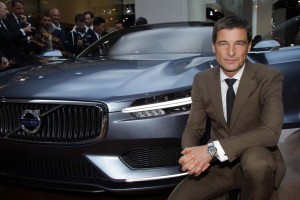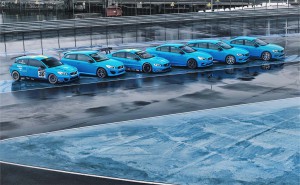Volvo has become the latest automaker to set up a separate operation focused specifically on electric vehicles, in this case, putting the emphasis on “high performance” models.
The move appears to position its Polestar division to challenge the new Mercedes-EQ sub-brand, which is set to launch at least seven electric vehicles by 2022, and BMW i, as well as upstart battery-carmakers like Tesla, Faraday Future and Lucid. The announcement does not appear to preclude Volvo’s ability to produce less performance-oriented electric vehicles under its own badge.
Purchased by Volvo in 2015, Polestar will now operate as a standalone company with a new management team. That includes Chief Operating Officer Jonathan Gooding, who had been Volvo’s communications chief, and new Chief Executive Officer Thomas Ingenlath, who had been Volvo’s global design director.
Reassigning Ingenlath, who had been overseeing the dramatic shift in Volvo’s styling language, “shows our commitment to establishing a truly differentiated stand-alone brand within the Volvo Car Group,” said Håkan Samuelsson, president and chief executive of Volvo Cars.
Swedish-based Volvo itself was acquired by Zhejiang Geely in 2010, and has been taking the lead in the Chinese company’s ambitions to become a truly global automotive manufacturer. With a massive cash infusion from its new parent, Volvo has largely relaunched itself, starting with the well-reviewed XC90 sport-utility vehicle that was named North American Truck of the Year in 2016.
(Volvo parent Geely takes controlling stake in Lotus, Proton. Click Here for the latest.)
A key part of the strategy has been a shift to more advanced turbo, supercharged and hybrid powertrains. The top-line T8 Twin-Engine is a plug-in hybrid that gets 19 miles in all-electric mode in the XC90 and makes a combined 316 horsepower and 295 pound-feet of torque.
Volvo officials have openly discussed plans to add a fully electric driveline to the product line-up. And it appears such a move is still in the works. The first of those vehicles is set to come to market in 2019. It is expected to deliver well in excess of 200 miles per charge and yet come in under $40,000, putting it in the same price segment as the new Tesla Model 3.
While initial sales targets are modest, Volvo has said it believes it will be able to sell “up to 1 million electrified cars by 2025 globally.”
Polestar will go after an entirely different audience. Under the new strategy, the Swedish maker explained, “Polestar will be a credible competitor in the emerging global market for high-performance electrified cars.”
(EV makers compete for “world’s fastest” title. Click Here for more.)
While the first generation of mass market electric vehicles typically focused on energy efficiency, at the expense of performance, that approach is beginning to shift. The growing success of the Tesla brand – especially for higher performance models such as the Model S P100d with Ludicrous Mode – has shown there’s a potentially sizable market for vehicles that are both mean and green.
Indeed, even mainstream battery-based products are starting to put more emphasis on performance. But Polestar appears set to position Volvo to go up against more extreme players like Lucid and Faraday Future – both of which are targeting top speeds of around 200 mph, with 0 to 60 times in the low-2 second range. Then there’s Croatian-based Rimac Automobili, which landed in the news recently when one of its electric hypercars was wrecked by Richard Hammond, co-star of the Netflix series, “Grand Tour.”
Unlike current models, the electric vehicles developed by Polestar will no longer carry the Volvo badge. And a statement by Ingenlath suggests that the new company will be targeting relatively high prices and low volumes, the new CEO expressing his excitement at “developing a fabulous portfolio of bespoke products.”
Volvo and Polestar promise to reveal more of their plans in the coming months.
(Why did Volvo buy Polestar in the first place? Click Here for our initial report.)



